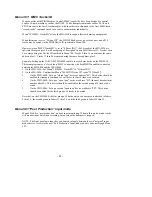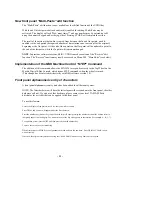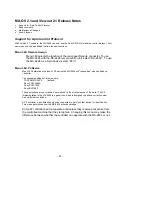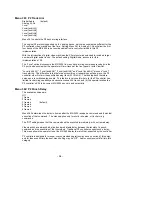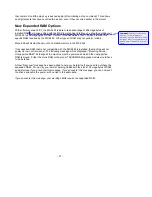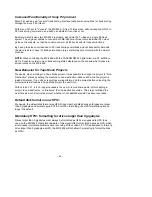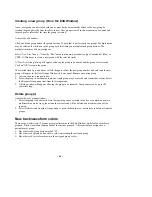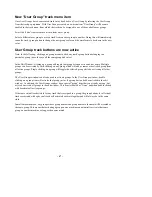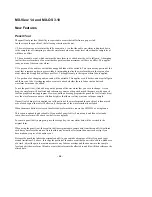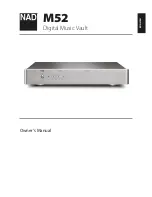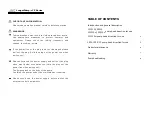
- 36 -
Auto Project Name Priorities
The MX-2424 will look for "autoloop" first, then "autoplay", then "autoload" and act on the first
one found. The project name can contain either upper or lower case character, because project
names are not case sensitive.
Drive Read Only Status
If any of these Auto Projects are found upon boot-up, the SCSI volume containing the project is
set in software to Read Only to prevent any accidental records or deletions. This Read Only
status does not affect the drive itself, only how the MX-2424 sees it.
If you wish to delete or edit a project on a drive set to Read Only, unmount the drive, then
remount it. Once remounted, the drive will lose it's Read Only status.
Menu 005 Sample Rates
With version 3.01, the MX-2424's available sample rates has been expanded to accommodate
more post-production requirements: The available rates now are:
42294 (44x23/25)
84587 (88x23/25)
42336 (44x24/25)
84672 (88x24/25)
44056 (44100-)
88112 (88200-)
44100 (default)
88200
44144 (44100+)
88288 (88200+)
45938 (44x25/24)
91875 (88x25/24)
45983 (44x25/23)
91967 (88x25/23)
46034 (48x23/25)
92068 (96x23/25)
46080 (48x24/25)
92160 (96x24/25)
47952 (48000-)
95904 (96000-)
48000 96000
48048 (48000+)
96096 (96000+)
50000 (48x25/24)
100000 (96x25/24)
50050 (48x25/23)
100100 (96x25/23)
•
The terminology "42336 (44x24/25)" means a 44.1K rate pulled down by the 24 frame to 25
frame ratio.
•
The number "23" is used to denote the NTSC pull-down version of the 24 frame rate, 23.976
frames per second. Hence the display "42294 (44x23/25)" means a 44.1K rate pulled down
by the 23.976 to 25 frame ratio.
•
The terminology "44056 (44100-)" indicates the 44.1K rate with the standard NTSC pull-
down. Similarly, "44144 (44100+)" implies an NTSC pull-up.
Menu 522 Meter Clip Mode
Menu 522 now allows for options regarding how the MX-2424 will display digital "overs" on its
meters. When set to "Input Only, overs will display when played back but will disappear a
moment later. When set to "Input and Play" any digital overs will display when played back, and

